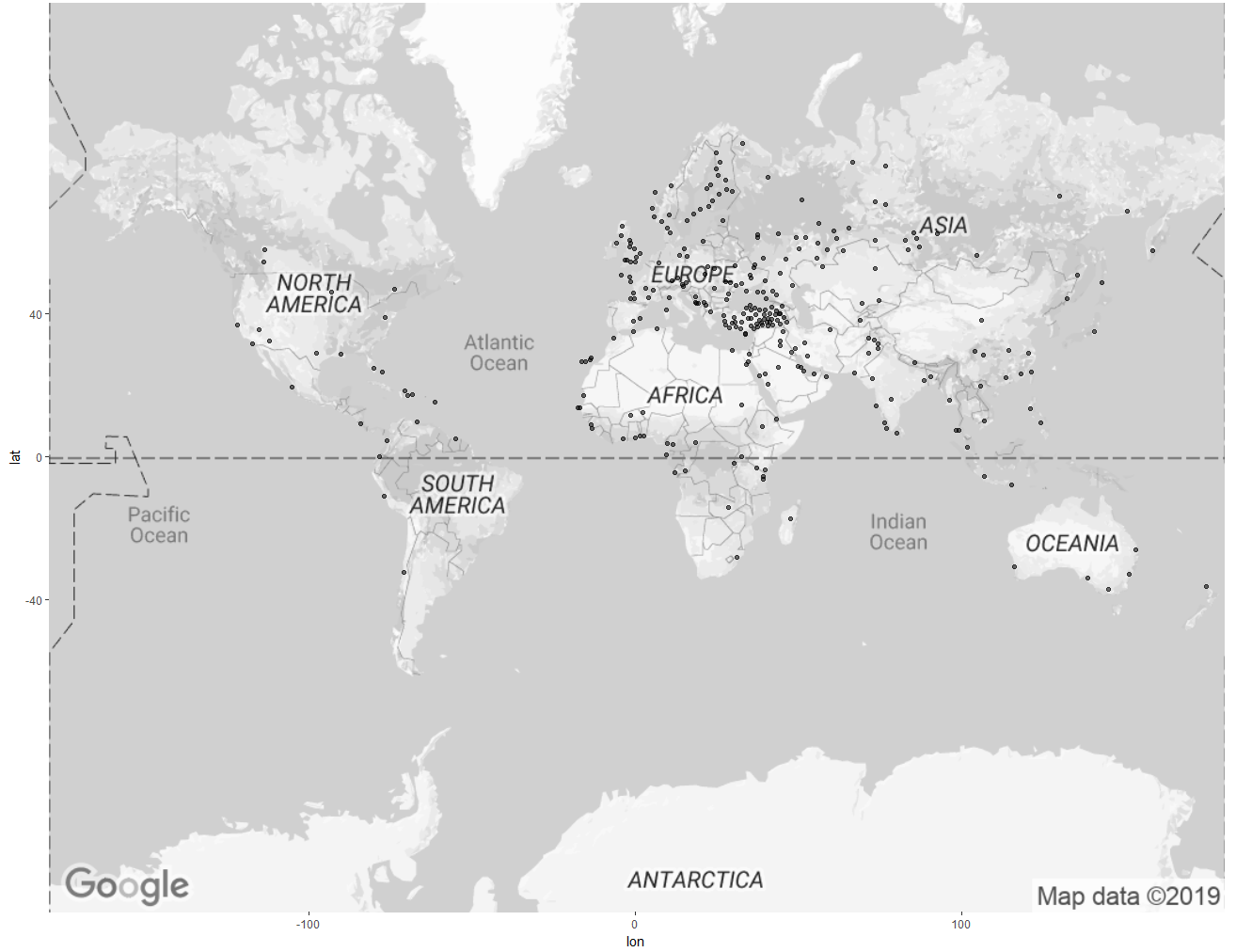I am using ggmap and wish to have a map of the world centered on Australia to which I can easily plot geocoded points. ggmap seems to be a lot easier to use compared to some of the other mapping packages. Yet when I bring through a map using the code below it errors.
gc <- geocode('australia')
center <- as.numeric(gc)
> map <- get_map(location = center, source="google", maptype="terrain", zoom=0)
Error: zoom must be a whole number between 1 and 21
From the get_map help: "zoom: map zoom, an integer from 0 (whole world) to 21 (building), default value 10 (city). openstreetmaps limits a zoom of 18, and the limit on stamen maps depends on the maptype. 'auto' automatically determines the zoom for bounding box specifications, and is defaulted to 10 with center/zoom specifications."
Changing the zoom to one does not error for get_map but does for plotting that map
map <- get_map(location = center, source="google", maptype="terrain", zoom=1)
ggmap(map)
Warning messages:
1: In min(x) : no non-missing arguments to min; returning Inf
2: In max(x) : no non-missing arguments to max; returning -Inf
3: In min(x) : no non-missing arguments to min; returning Inf
4: In max(x) : no non-missing arguments to max; returning -Inf
It looks like the longitude isn't being pulled through. Finally with a zoom of 2 it does work but does not bring through a map of the whole world
So, my question is how can I use get_map to get a world map?
Session info:
sessionInfo() R version 2.15.0 (2012-03-30) Platform: i386-pc-mingw32/i386 (32-bit)
locale:
[1] LC_COLLATE=English_United Kingdom.1252
[2] LC_CTYPE=English_United Kingdom.1252
[3] LC_MONETARY=English_United Kingdom.1252
[4] LC_NUMERIC=C
[5] LC_TIME=English_United Kingdom.1252
attached base packages:
[1] stats graphics grDevices utils datasets methods base
other attached packages:
[1] mapproj_1.1-8.3 maps_2.2-6 rgdal_0.7-12 sp_0.9-99
[5] ggmap_2.1 ggplot2_0.9.1
loaded via a namespace (and not attached):
[1] colorspace_1.1-1 dichromat_1.2-4 digest_0.5.2 grid_2.15.0
[5] labeling_0.1 lattice_0.20-6 MASS_7.3-17 memoise_0.1
[9] munsell_0.3 plyr_1.7.1 png_0.1-4 proto_0.3-9.2
[13] RColorBrewer_1.0-5 reshape2_1.2.1 RgoogleMaps_1.2.0 rjson_0.2.8
[17] scales_0.2.1 stringr_0.6 tools_2.15.0



